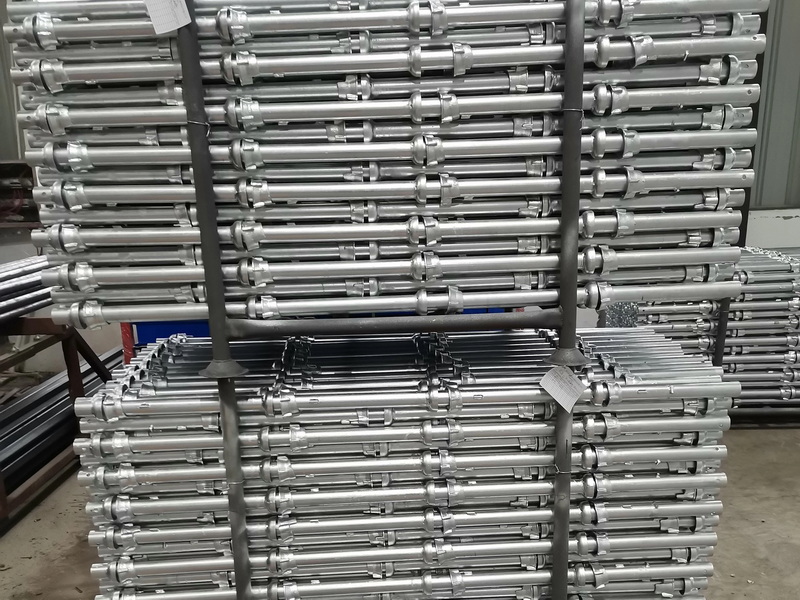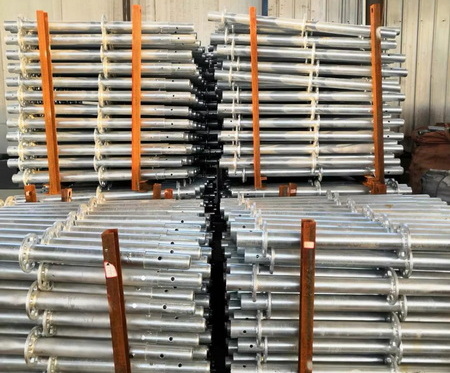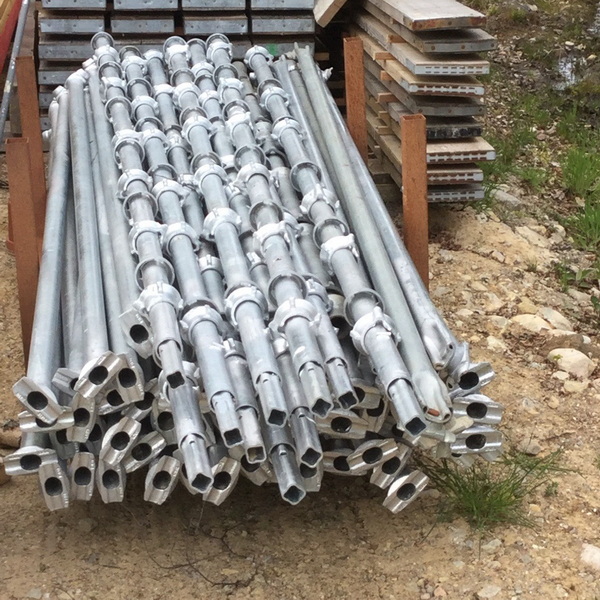Content Menu
● Introduction to Cuplock Scaffolding
● Factors Influencing the Weight of Cuplock Scaffolding
● Cuplock Scaffolding Weights
● Load Capacity and Safety Considerations
● Advanced Features and Accessories
● Environmental Considerations
● Maintenance and Storage
● Conclusion
● FAQ
>> 1. What are the primary components of cuplock scaffolding?
>> 2. How does the material quality affect the weight of cuplock scaffolding?
>> 3. What factors determine the load capacity of cuplock scaffolding?
>> 4. How can overloading of cuplock scaffolding be prevented?
>> 5. What are the safety measures for cuplock scaffolding weights?
● Citations:
Cuplock scaffolding is a widely used and versatile system in the construction industry, known for its robustness and ease of assembly. It consists of various components such as standards, ledgers, braces, and planks, all designed to provide a secure platform for workers and materials. Understanding the weight of cuplock scaffolding per meter is crucial for ensuring safety and efficiency in construction projects. This article will delve into the components, factors influencing weight, and safety considerations of cuplock scaffolding.

Introduction to Cuplock Scaffolding
Cuplock scaffolding is a mature system that has been in use for decades. Its design allows for quick and easy assembly, making it a favorite among construction teams. The system is composed of several key components:
- Standards (Vertical Posts): These are the vertical elements that provide the structural support for the scaffolding. They are typically made from high-strength steel with a diameter of 48.3 mm and a thickness of 3.2 mm.
- Ledgers (Horizontal Supports): These are the horizontal components that connect the standards and provide a platform for planks. They also have a diameter of 48.3 mm and a thickness of 3.2 mm.
- Braces: These are diagonal or horizontal supports that enhance the stability of the scaffolding structure. They are typically made from steel with a diameter of 48.3 mm and a thickness of 2.5 mm.
- Planks: These are the wooden or metal boards placed on the ledgers to create a working platform.
Factors Influencing the Weight of Cuplock Scaffolding
The weight of cuplock scaffolding per meter is influenced by several factors:
1. Material Quality and Type: The primary material used is high-strength steel, which can be hot-dip galvanized, painted, or powder-coated. The quality and type of steel directly affect the weight and durability of the scaffolding.
2. Component Dimensions: The diameter and thickness of the pipes used for standards, ledgers, and braces determine their weight. For example, standards and ledgers typically have a diameter of 48.3 mm and a thickness of 3.2 mm, while braces have a thickness of 2.5 mm.
3. Configuration and Design: The spacing of standards and ledgers can affect the overall weight distribution and structural integrity of the scaffolding. Closer spacing generally supports heavier loads.
4. Surface Treatment: The surface treatment, such as hot-dip galvanizing, adds to the weight but enhances durability and resistance to corrosion.

Cuplock Scaffolding Weights
The weights of individual components vary based on their length and material:
- Standards: Typically range from 10 kg to 20 kg depending on length.
- Ledgers: Range from 8 kg to 15 kg depending on length.
- Diagonal Braces: Range from 6 kg to 12 kg depending on length.
Load Capacity and Safety Considerations
The load capacity of cuplock scaffolding is critical for safety. It is generally categorized into light-duty, medium-duty, and heavy-duty applications:
- Light-Duty: Supports around 75 kg per square meter, suitable for tasks like painting.
- Medium-Duty: Supports approximately 150 kg per square meter, used for more intensive work.
- Heavy-Duty: Can bear loads of 275 kg per square meter or more, ideal for projects requiring significant material storage.
To ensure safety, it's essential to:
- Consult Manufacturer Specifications: Always refer to the manufacturer's guidelines for specific load capacities.
- Conduct Regular Inspections: Ensure scaffolding is inspected by a competent person before use and regularly thereafter.
- Distribute Weight Evenly: Ensure materials are evenly spread out across the platform.
- Train Workers: All personnel should be aware of load limits and trained in proper material handling.
Advanced Features and Accessories
Cuplock scaffolding can be enhanced with various accessories to improve functionality and safety:
- Staircases and Ladders: Provide safe access to higher levels of the scaffolding.
- Guardrails and Toeboards: Essential for preventing falls and ensuring a safe working environment.
- Cantilever Brackets: Allow for overhangs, useful for reaching areas that are difficult to access.
Environmental Considerations
Cuplock scaffolding can be used in various environmental conditions, but it's important to consider factors such as:
- Weather Conditions: Extreme weather like strong winds or heavy rain can affect scaffolding stability. Ensure that scaffolding is securely anchored and inspected regularly during adverse weather.
- Corrosion Protection: In coastal or humid environments, additional corrosion protection may be necessary to extend the lifespan of the scaffolding.
Maintenance and Storage
Proper maintenance and storage are crucial for extending the lifespan of cuplock scaffolding:
- Regular Cleaning: Remove dirt and debris to prevent corrosion.
- Storage Conditions: Store components in a dry, secure area to prevent damage.
Conclusion
Understanding the weight of cuplock scaffolding per meter is vital for ensuring the structural integrity and safety of construction projects. By considering the material quality, component dimensions, and configuration, project managers can optimize the use of cuplock scaffolding while adhering to safety standards.

FAQ
1. What are the primary components of cuplock scaffolding?
Cuplock scaffolding is primarily composed of standards, ledgers, braces, and planks. These components work together to provide a stable platform for workers and materials.
2. How does the material quality affect the weight of cuplock scaffolding?
The material quality, particularly the type and grade of steel used, directly influences the weight and durability of cuplock scaffolding. High-strength steel provides greater structural integrity and supports heavier loads.
3. What factors determine the load capacity of cuplock scaffolding?
The load capacity is determined by factors such as material quality, design and configuration, and the type of construction project. Closer spacing of standards and ledgers can support heavier loads.
4. How can overloading of cuplock scaffolding be prevented?
Overloading can be prevented by proper planning, monitoring weight limits, training workers on safe loading practices, and conducting regular inspections to remove excess loads.
5. What are the safety measures for cuplock scaffolding weights?
Safety measures include ensuring that scaffolding is placed on stable ground, monitoring wind conditions, and adhering to manufacturer specifications for load capacities. Regular inspections and proper training are also crucial.
Citations:
[1] https://primesteeltech.co.in/what-is-the-load-capacity-of-a-cuplock-scaffold.html
[2] https://www.youtube.com/watch?v=wBKilb9ALEY
[3] https://rapid-scafform.com/cuplock-scaffold/
[4] https://www.alibaba.com/showroom/cuplock-scaffolding-weights.html
[5] https://www.rscaffolding.com/product-detail/cuplock-scaffolding-ledgers/
[6] https://www.youtube.com/watch?v=fnJw0xLZE5s
[7] https://www.wm-scaffold.com/cup-lock-scaffold.html
[8] https://patents.google.com/patent/WO2018148977A1/zh
[9] https://www.indiamart.com/proddetail/vertical-scaffolding-cuplock-2275107648.html
[10] https://www.youtube.com/watch?v=l7SdKkdbeU4






















